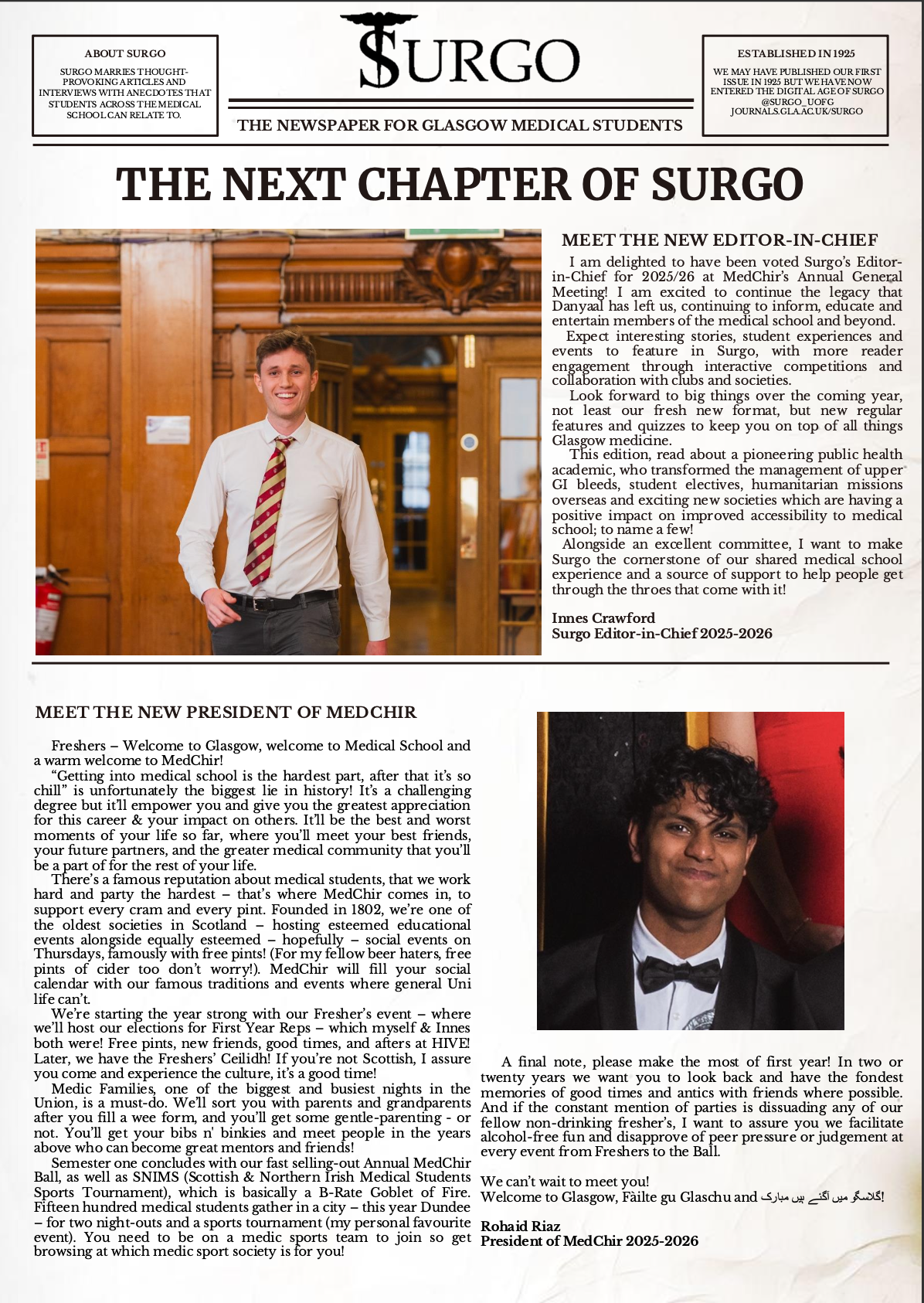My Summer as an Anatomy Intern
DOI:
https://doi.org/10.36399/Surgo.3.652Abstract
This Summer, I had the privilege of working under Siobhan Cantley and Professor Scott Border as a multimedia intern at the Anatomy Department of the University of Glasgow. Having seen the position advertised by the Student Opportunities Hub, I was intrigued by the prospect of self-directed content creation, utilising existing technology and practices to develop new teaching modalities for students at the college of Medical, Veterinary and Life Sciences.
The Thompson building is home to the Clinical Anatomy Skills Centre of the Royal College of Surgeons of Glasgow, where trainees develop their surgical skills on cadavers under supervision. Separate from the MBChB and Anatomy BSc curricula, the team are keen to integrate training footage from these courses into undergraduate teaching, to give them a perspective of how an understanding of anatomy is utilised in clinical practice. For example, I used footage from an abdominal laparoscopic procedure to visualise the boundaries of the abdominal cavity. Learning how to make mini lectures while complying with the human tissue act was a huge challenge but one so important given the gratitude and respect owed to our body donors.
Three-dimensional visualisation of anatomy is another modality I spent time trying to develop. Through attending training at the University of Edinburgh, I learned how to use the department’s Artec Spider 3D scanner; a highly impressive device that creates high precision 3D models of real-world objects. Prosection teaching is not without it’s challenges which include long-term sample preservation and accessibility in large cohorts, therefore I discovered the benefit of having digital 3D models of prosections to complement existing in-person teaching.
A highly accessible modality that predates the Artec scanner is the MRI scan and as such I gained access to one of my own from a research study I took part in last year. Being able to demonstrate my own neuroanatomy in the mini lecture was quite the privilege and highlights how far we’ve come from looking at a film on a lightbox.
Making anatomy more tangible is another goal of the department and 3D printing was one of their recent investments towards to this. Having converted my MRI scan into a 3D model on Blender, I set about printing a life size model which after a lot of trial and error I managed to complete. The department are not short of anatomy models therefore I was keen to make my prints of educational benefit. Few models of musculoskeletal joints can be physically manipulated and taken apart therefore this is something I hope to develop.
Overall, the use of this innovative technology is likely to improve the anatomy learning experience. A learning point from the internship is the importance of keeping innovation relevant to the outcomes you are trying to achieve. Dopamine addicts like myself are very excited by fancy new technologies such as 3D printers, scanners and virtual reality devices such that we often don’t consider their impact and efficacy as learning tools. It is therefore essential that if these practices are introduced into the curriculum, they must be supported by robust evidence that supports enhanced learning outcomes and are not merely gimmicks.
This is an exciting research space and one that I would like to contribute to following my internship experience.
Reference:
1.University of Glasgow - Schools - School of Medicine, Dentistry & Nursing - Anatomy Facility [Internet]. Gla.ac.uk. 2022 [cited 2025 Sep 14]. https://www.gla.ac.uk/schools/medicine/anatomy/


